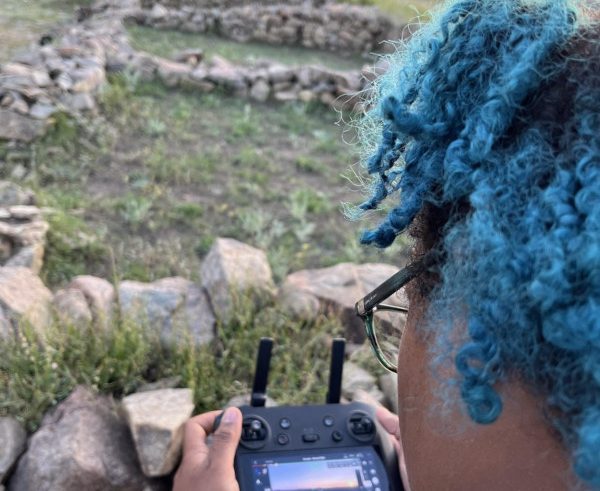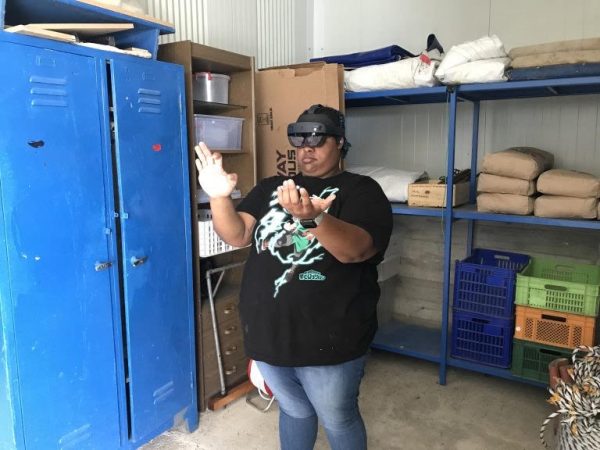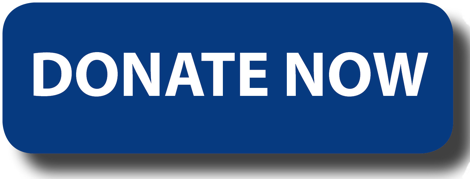
The Secret Life of an Archaeologist at Kerkenes
Mireya Smith, 2023 BIPOC Fieldwork Scholarship Recipient



The area to be excavated was split into 32 squares with multiple people digging with pickaxes. My previous experience had taught me that traditional archaeology calls for excavating in 10cm increments while keeping the surface level, then collecting and dry sieving the dirt that comes out of the trenches. Since the sediments at Kerkenes are comprised of clay and become solid when dry, so the team excavated with pickaxes, collected the dirt in plastic bags, recorded the elevations with the total station, and then wet sieved the dirt using Hydra. This process entailed getting a bag of the collected dirt, placing it in a mesh crate, and washing away the small dirt particles, leaving behind any ivory, bone, or ceramic that were missed during the excavation process.
Things collected include bone, ivory, ceramic, and building materials with impressions on them. Ceramics were washed, labeled, and categorized by the students and volunteers while the other materials went to the registrar and conservator to be assigned ID numbers. After this, the items were photographed, conserved, 3D scanned, and put on shelves for later reference by specialists or the museum.
Some other other methods we used included 3D scanning and photogrammetry of the area, along with some of the artifacts. Photogrammetry meant going to site when the sun was not as bright and taking back-to-back photos of the installation, walls, and the trench itself. These photos will be uploaded to a program that turns them into a 3D image. The 3D scanning of the area works similarly except it is done in real time as opposed to having to wait to upload the images.
As the excavation season came to an end, we closed the unit and compiled all the materials and data. Some of the team went to the site to clean and backfill while others processed the ceramics, bone, ivory, etc. The season ended with a workers’ dinner, where we celebrated their efforts before everyone went on their way for new adventures.

The fun part of excavations is not limited to the skills we learn and apply, however. There is so much that happens behind the scenes that affects not only the people, but the flow of the project itself. Being away from home for two months with strangers is hard enough, but being away from home in another country is even harder. The long workdays make it harder to keep in contact with loved ones on a consistent basis. While we all hope to get along, there are struggles and disagreements here and there. What I think is great about this experience is that it not only solidifies the relationship with your support group at home, but also challenges you as a person to make and keep up friendships while on the project. With people coming and going, there are so many opportunities to make friends and connections. We really do function like a family and share many great memories—like the workers singing and dancing, our six-minute rendition of Bohemian Rhapsody when the bosses were away (sorry you had to find out this way), bonfires, enjoying the scenery while eating meals, cookin, and baking for everyone, tears, talking about and resolving conflicts, trying new fruit, and just spending time with the new friends we’ve made.
I came to this project wanting to gain experience in archaeology and GIS and came out with so much more. I accomplished my goals and even was offered a job at two different CRM companies with many other interviews. I also made new friends that I believe will last a lifetime. My favorite part of this whole project was having the opportunity to meet all the students, volunteers, senior staff, and professors. Our backgrounds are so diverse, but Kerkenes bonds us all. I’m going to miss them so much! I hope to come back and make more memories with everyone!
Mireya Smith graduated in May of 2023 with a BA in Anthropology and an undergraduate certificate in GIS from the University of Central Florida. She was originally on a pre-med track until after Covid when she realized she wanted to do something she loved instead of something to make others happy. After studying abroad in Türkiye, she has been working in CRM. Mireya has completed projects in Mississippi, Texas, and Florida. She is so thankful for the grant! Without it, she would not have gained the archaeological experience and then in turn work opportunities.
